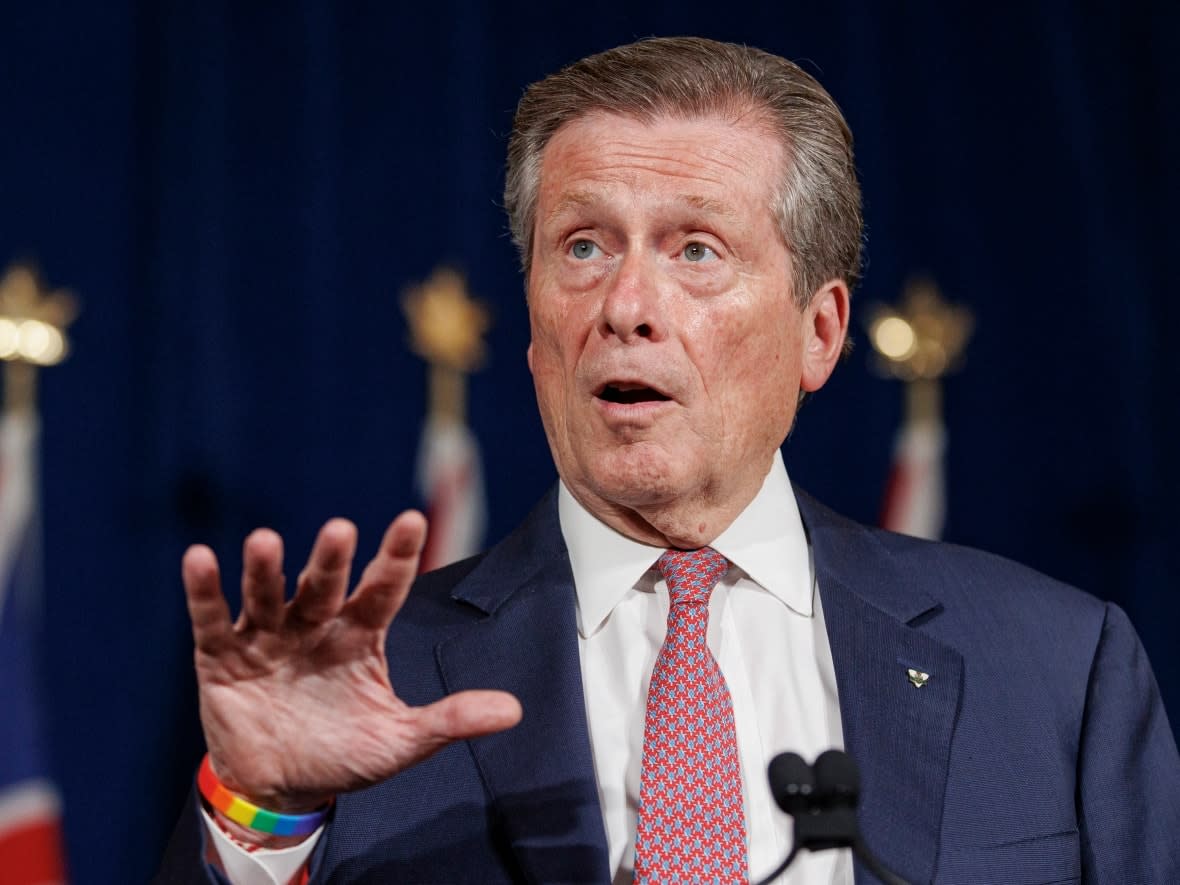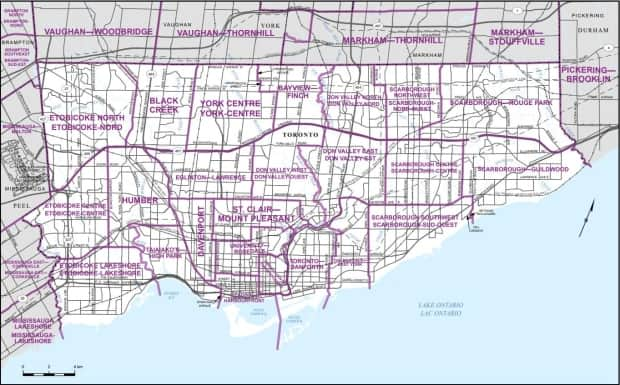A federal commission wants to remove a riding in Scarborough. Toronto's mayor is fighting back

Toronto Mayor John Tory says he is fighting against proposed changes that would "unnecessarily" break up communities and leave Scarborough residents with one less voice in federal parliament.
The changes proposed by the Federal Electoral Boundaries Commission for Ontario would scrap the Scarborough-Agincourt riding, reducing the city's total number of federal ridings from 25 to 24. That would increase the boundary limits of Scarborough-Rouge Park, create a new riding called Scarborough Northwest and fold some communities into the riding of Don Valley North.
"Although the city is amalgamated, many residents continue to reference their respective former municipalities as their home," Tory wrote in the letter, dated Thursday, but shared publicly Friday.
"Identifying as a resident of Scarborough means a lot more to people than you might know, sometimes even more so than identifying with the City of Toronto itself."
Tory, who was recently elected to his third term in office, voiced "strong opposition" to the proposed electoral boundary changes in the letter, citing a hit to the city's fast-growing population and the diverse and immigrant communities that have chosen the east end as their home.
The commission is tasked with revising federal electoral ridings to closely match the most recent census data. It published its proposal in August after concluding there was "overrepresentation" in Toronto due to uneven population growth between the city and surrounding areas, which it notes is expected to continue or increase in the future.

City's ward boundaries under threat
In a statement to CBC Toronto, the City of Toronto confirmed that if federal ridings get redrawn, the city has no choice but to follow suit.
"Under current legislation ... if the federal electoral boundaries were to change, the city's ward boundaries would change to reflect them," reads the statement.
Toronto saw major electoral boundary changes in 2018, when the Ford government redrew the city's wards and slashed the number of councillors from 47 to 25 to match federal and provincial riding boundaries.
Scarborough had 10 municipal wards before the boundaries changed. It now has six wards and will have five if the changes take place.
"For years and years the residents of Scarborough have voiced that they feel unfairly treated and overlooked by governments, and this decision would just reaffirm the idea in many people's minds," said Tory.
What would happen if the ridings stayed the same?
If the boundaries stayed the same, the average riding in Toronto would be about four per cent less populous than the provincial quota of 116,590. The quota is calculated as Ontario's total population divided by the 122 electoral seats allocated for the province.
Left unchanged, Scarborough North would be the least populous district in the city with 94,717 people, while all six Scarborough ridings would fall below the quota.
Meanwhile, large disparities between Toronto ridings would persist under the proposed changes. Census data shows the fast-growing district of Etobicoke-Lakeshore has almost 50,000 more people than Scarborough North.
The commission's proposed map would see the average Toronto riding fall virtually equal to the Ontario quota, with a 12,652-person range between the largest and the smallest ridings in the city.
If the commission's proposals are successful, northern Ontario is also set to lose a riding. Meanwhile, new districts would be created in the eastern and northern Greater Toronto Area, central Ontario, along with the Guelph area.
The commission has extended its deadline to receive written submissions until Saturday, about a month more than the previous deadline. Meanwhile, public hearings will continue until early November.
And unless an extension is granted, the commission has until Dec. 9 to table its report to the House of Commons but says changes to the electoral boundaries won't come into effect until April 2024 at the earliest.


